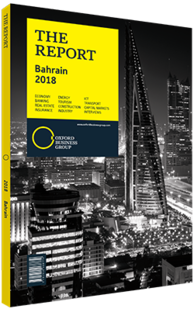Heightened demand for Bahraini bonds as an asset class
The landscape for fixed income has evolved significantly over the last few years and never has the argument for Bahraini bonds as a natural diversifier been stronger than in the last 12 months of 2017.
BUOYANT BONDS: Bahraini bonds as an asset class have survived significant headwinds in 2017, including the ongoing discussion among GCC member states, heightened geopolitical risk, three rate hikes and a general consensus of higher interest rates going forward. Despite these challenges, the Barclays Bahrain Bond Index was up by 6.3% in October 2017, an achievement that encountered minimal volatility amid a widening budget deficit and record debt issuances. This followed on the back of the 8.7% return achieved in 2016, when the kingdom had to endure low oil prices and a series of downgrades by international rating agencies.
Additionally, it is worth highlighting the impressive structural reform undertaken by Bahrain in an attempt to diversify and expand its economy while adapting to a challenging oil-price environment, all of which has made investors more comfortable with holding the kingdom’s debt.
The demand for government-issued debt has never been more apparent than in September 2017, when its bond issuance worth $3bn was oversubscribed by five times following the $1.75bn issued in the first quarter of the same year.
The reform measures carried out by the government have been ambitious and unprecedented. They are aimed at boosting revenue, cutting expenditure and rationalising various industries, all of which started with the implementation of the 5% value-added tax in the country, and across other GCC jurisdictions, at the beginning of 2018.
These qualitative and quantitative characteristics, most of which are expected to persist over the coming years, enable Bahraini bonds to provide compelling benefits to portfolio construction.
For instance, the correlation of Bahraini bonds with traditional asset classes between 2012 and 2017 is almost insignificant, and the correlation with oil prices is arguably negligible (see graph), even though over 90% of the kingdom’s revenue is generated from oil and energy exports.
Furthermore, Bahraini bonds registered the second-highest Sharpe ratio – an instrument measuring a fund’s risk-adjusted returns – and therefore could constitute an important portion of core fixed income allocation in a diversified portfolio.
KEY FACTORS: One of the likely contributors to the market’s performance is its distinct structural characteristics: Bahrain has the most diversified bond maturity spectrum compared to all the other GCC markets and benefits from a committed investor base, which is local and liquid, consisting largely of local banks, pension funds and so-called real-money accounts. The yield to maturity has also been historically higher than similarly rated peers, which has helped to retain elevated demand for bonds. The new conventional bond maturing in 2047 is currently the highest yielding sovereign paper as of late 2017.
Despite lower oil prices and challenging geopolitical activity, the positive returns generated by the Bahrain Bond Index over the last several years highlight the attractiveness and resilience of the asset class, and that risks to investing in the local bond market are lower than what may be perceived.
Bahrain has the most diversified bond maturity spectrum compared to all the other GCC markets and benefits from a committed investor base, which is local and liquid, consisting largely of local banks, pension funds and so-called real-money accounts
You have reached the limit of premium articles you can view for free.
Choose from the options below to purchase print or digital editions of our Reports. You can also purchase a website subscription giving you unlimited access to all of our Reports online for 12 months.
If you have already purchased this Report or have a website subscription, please login to continue.

